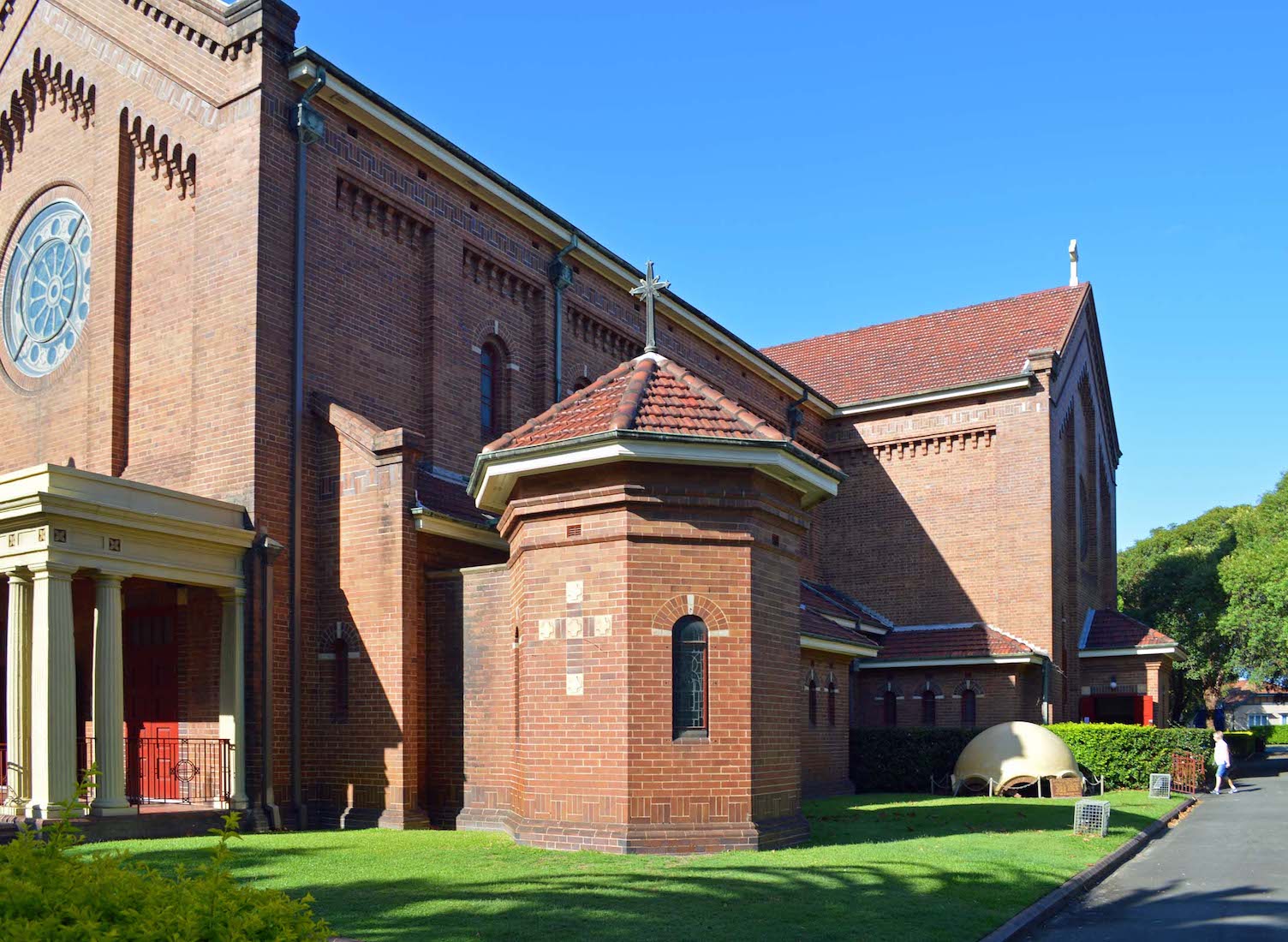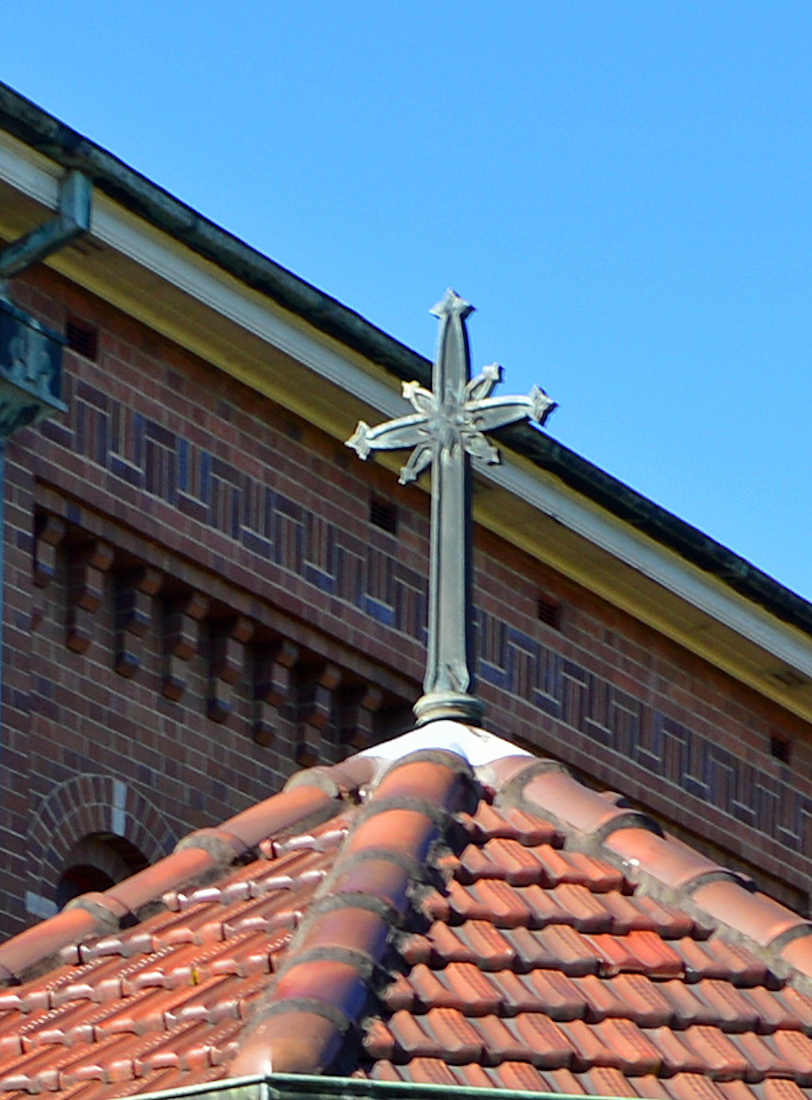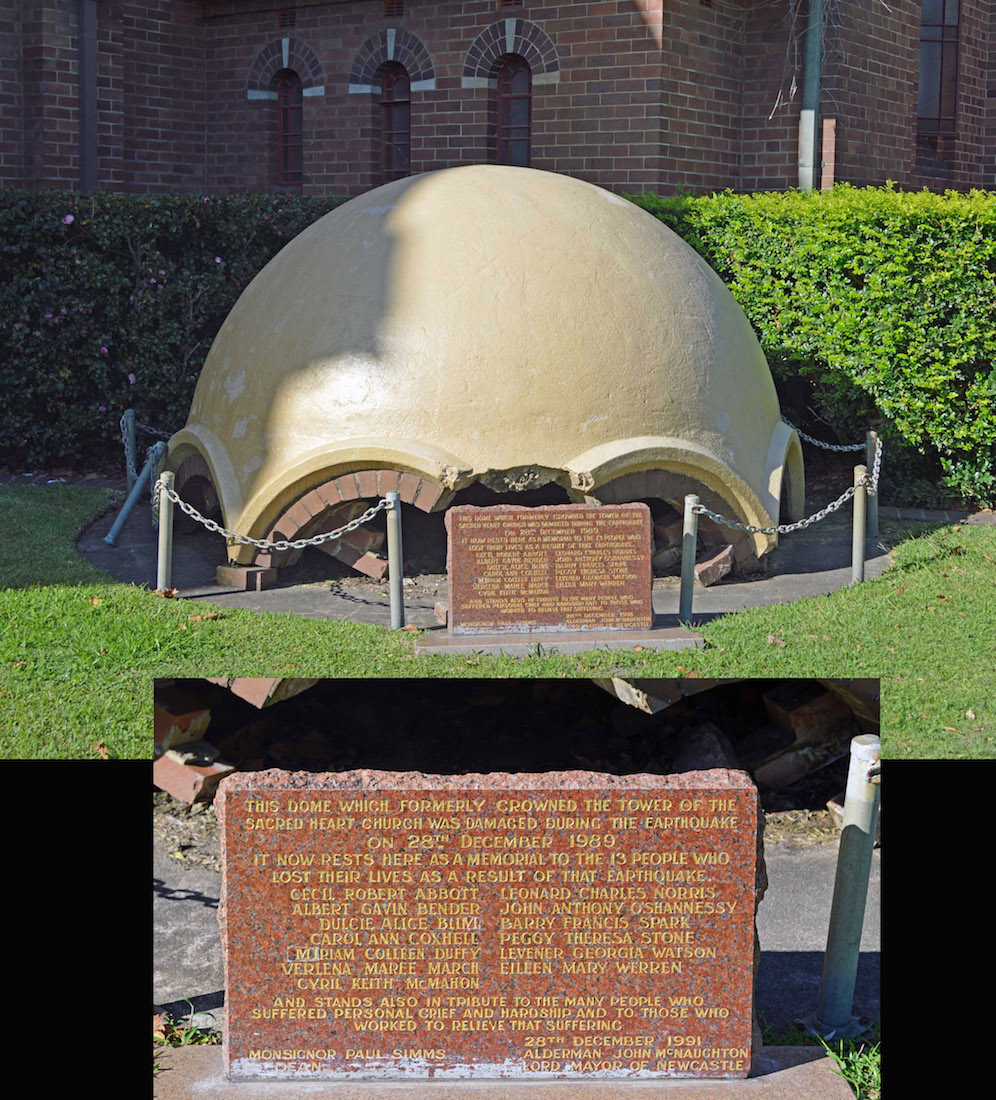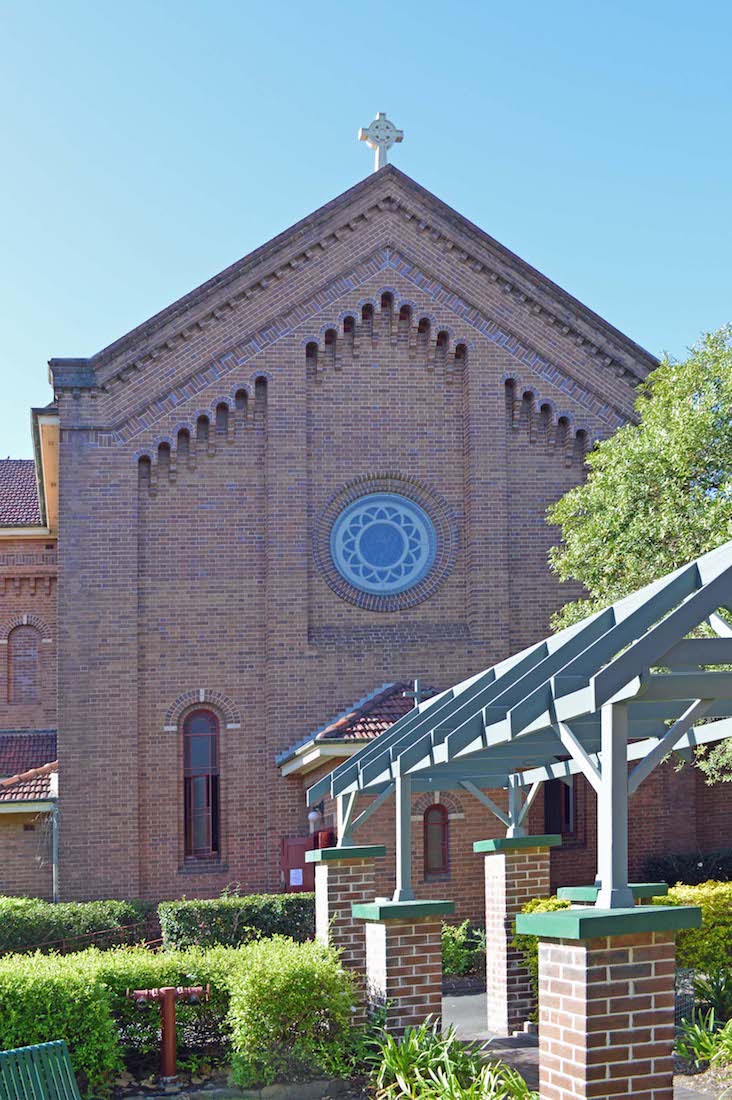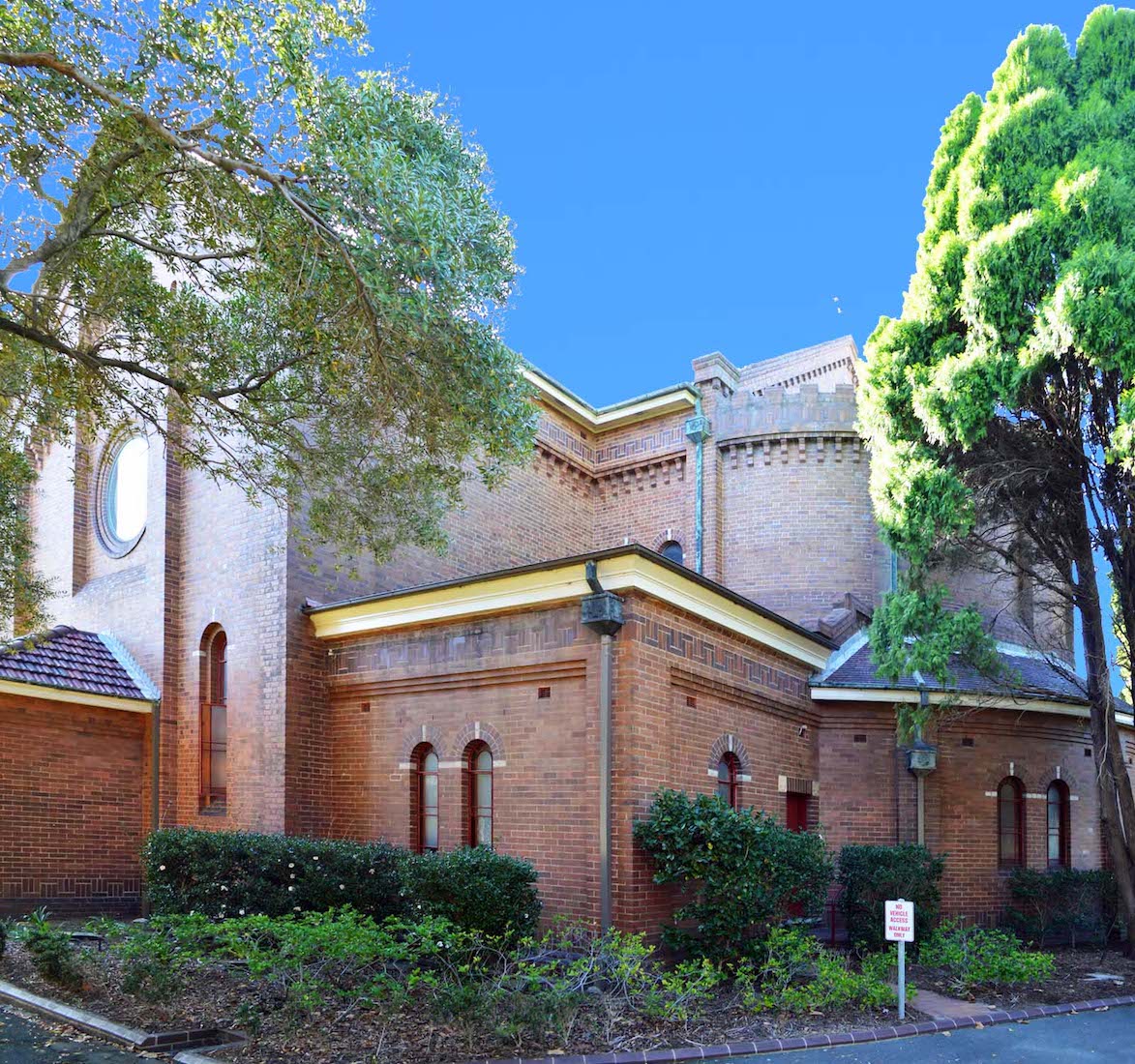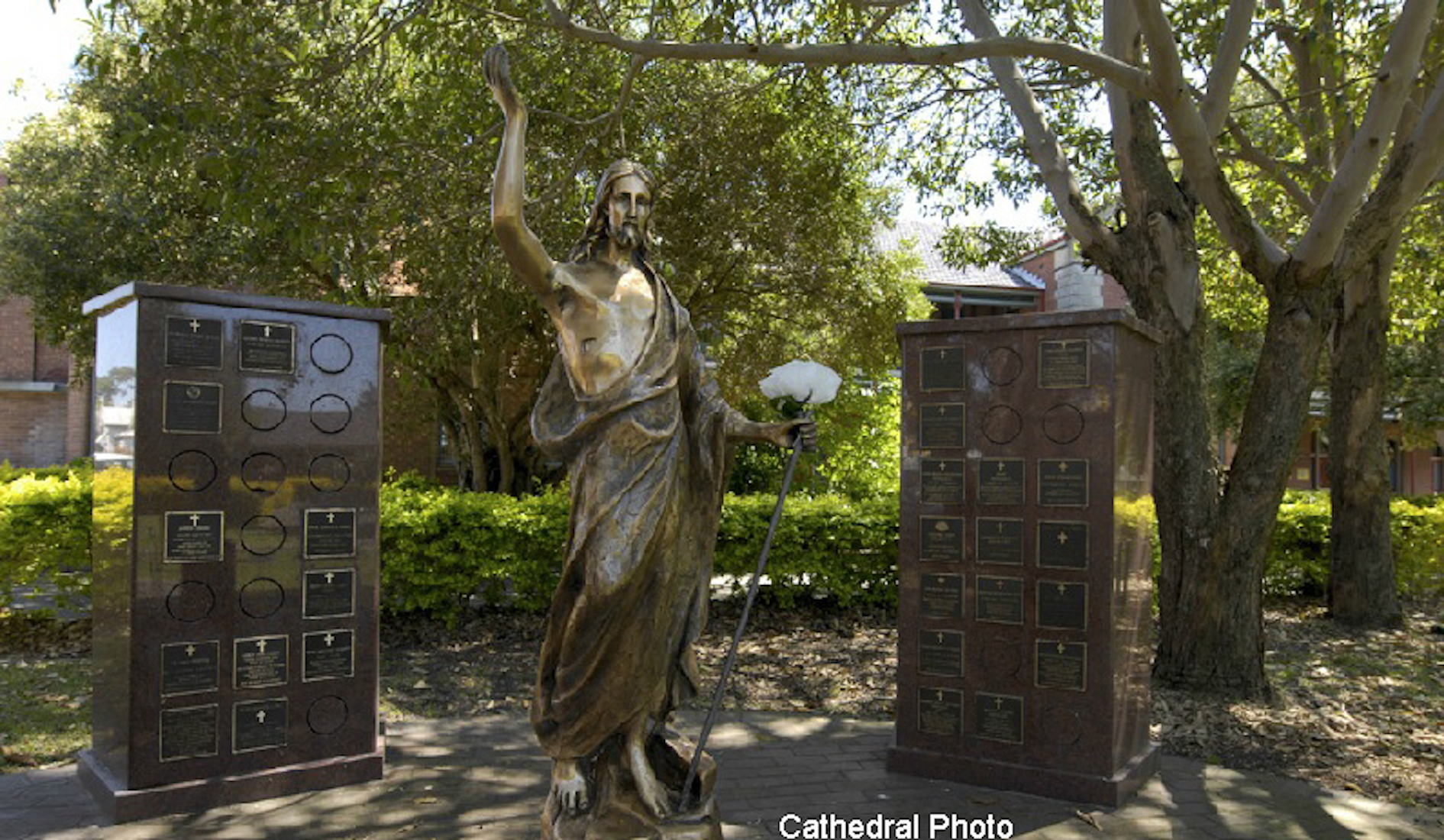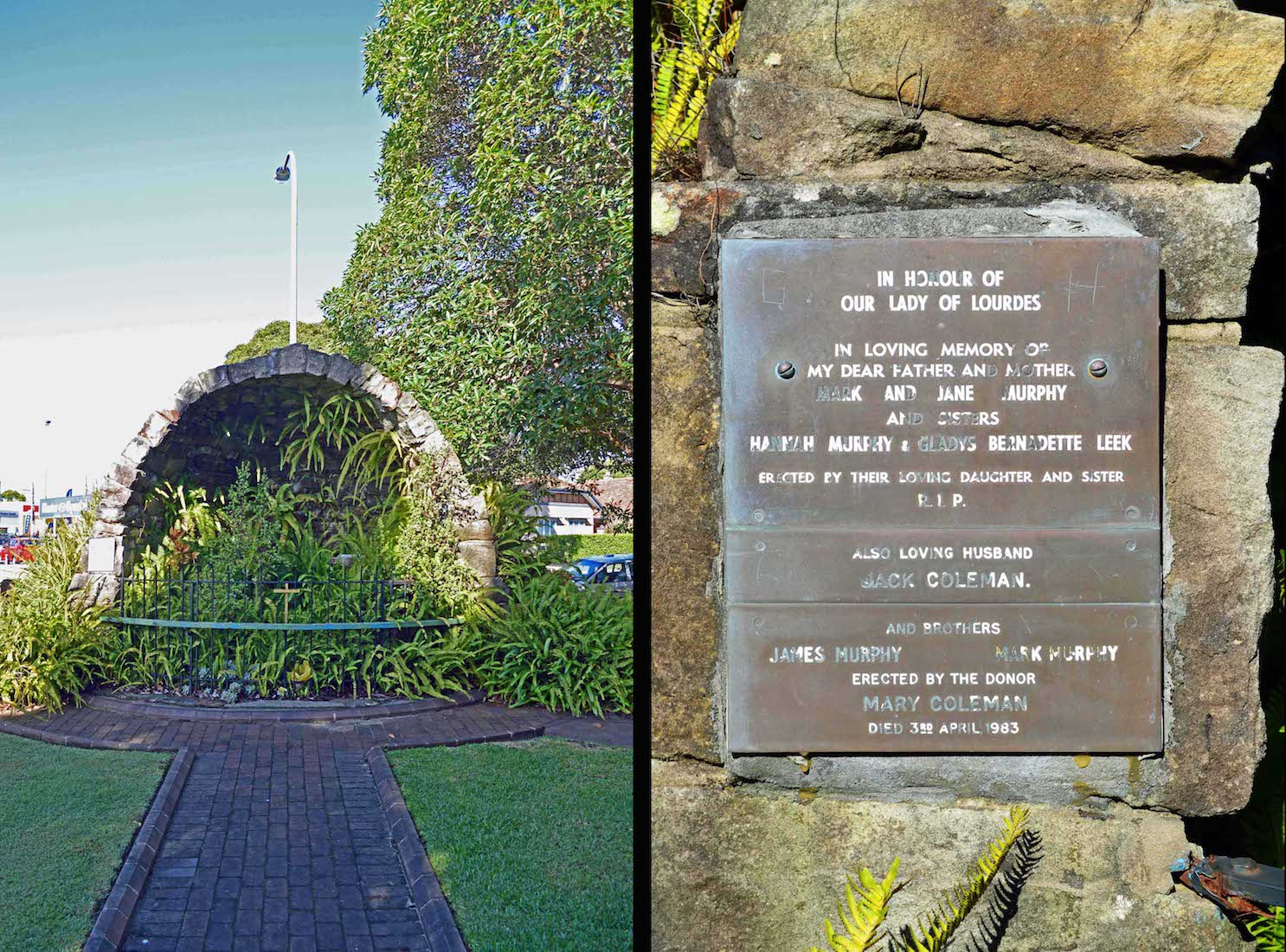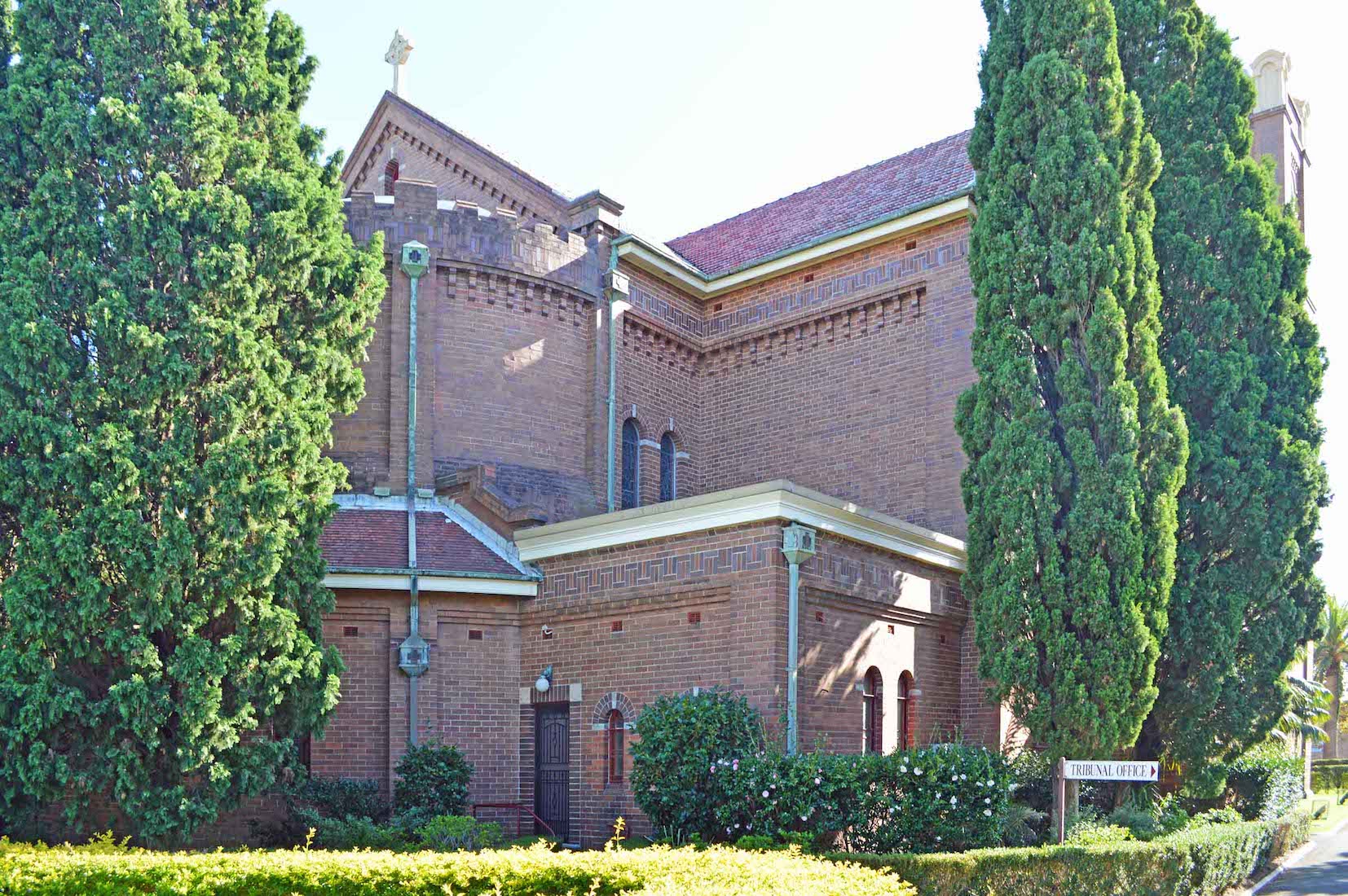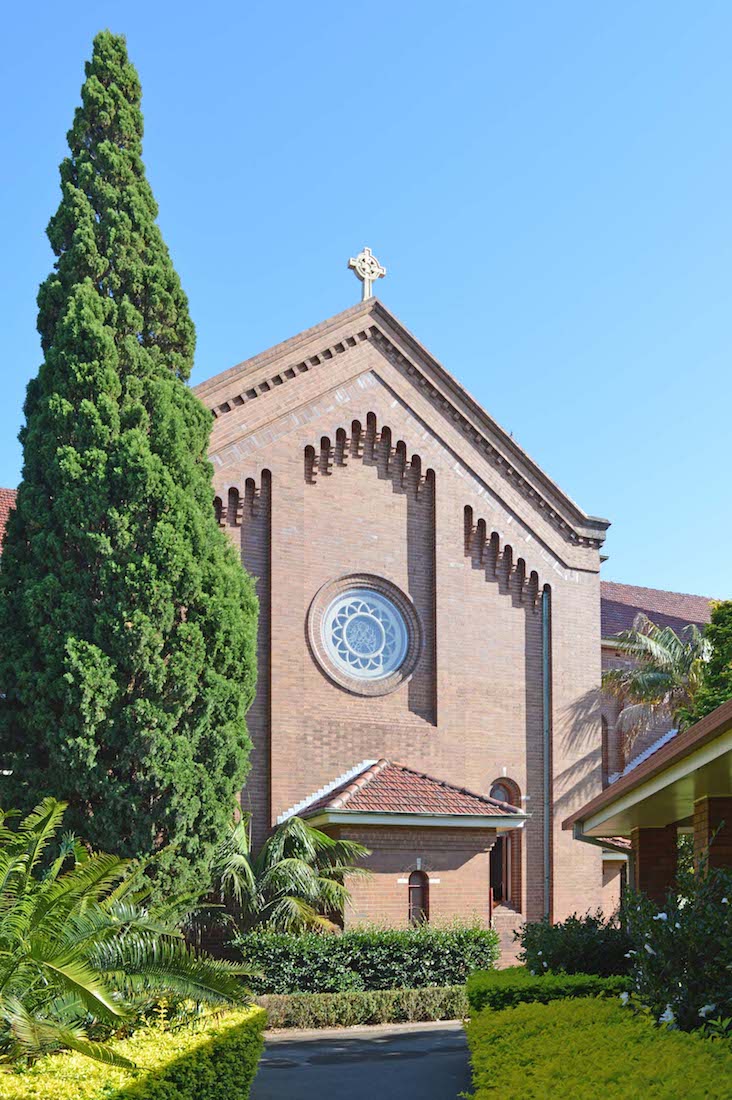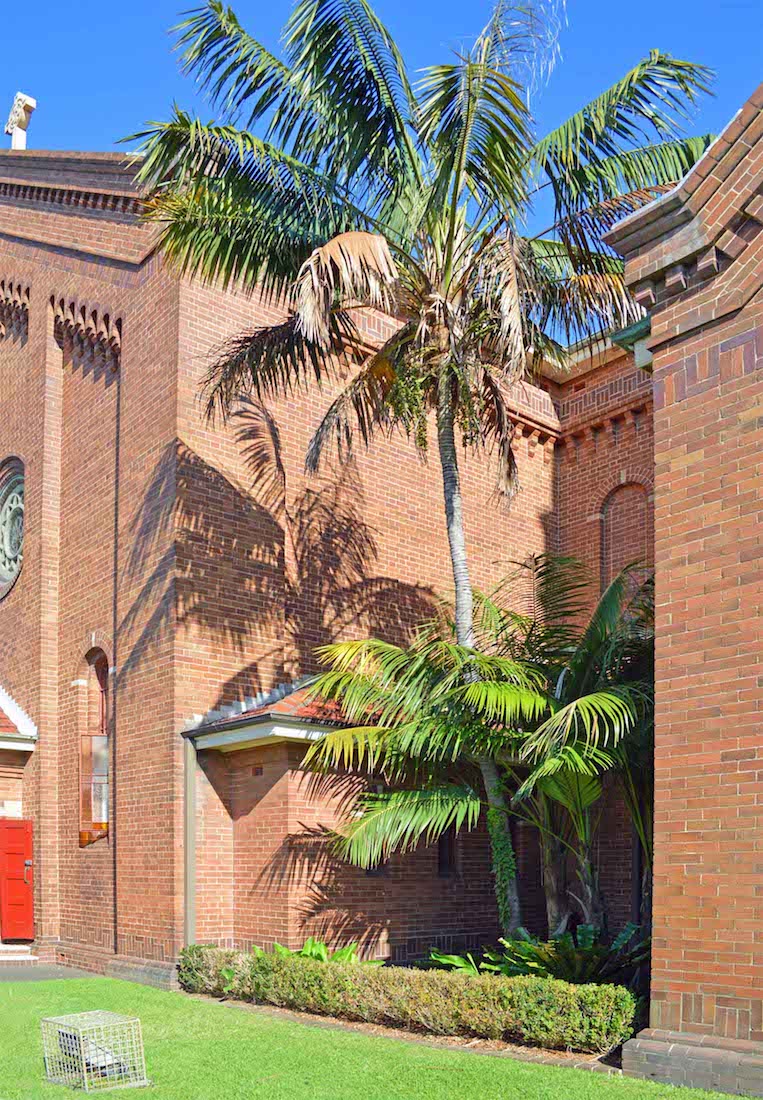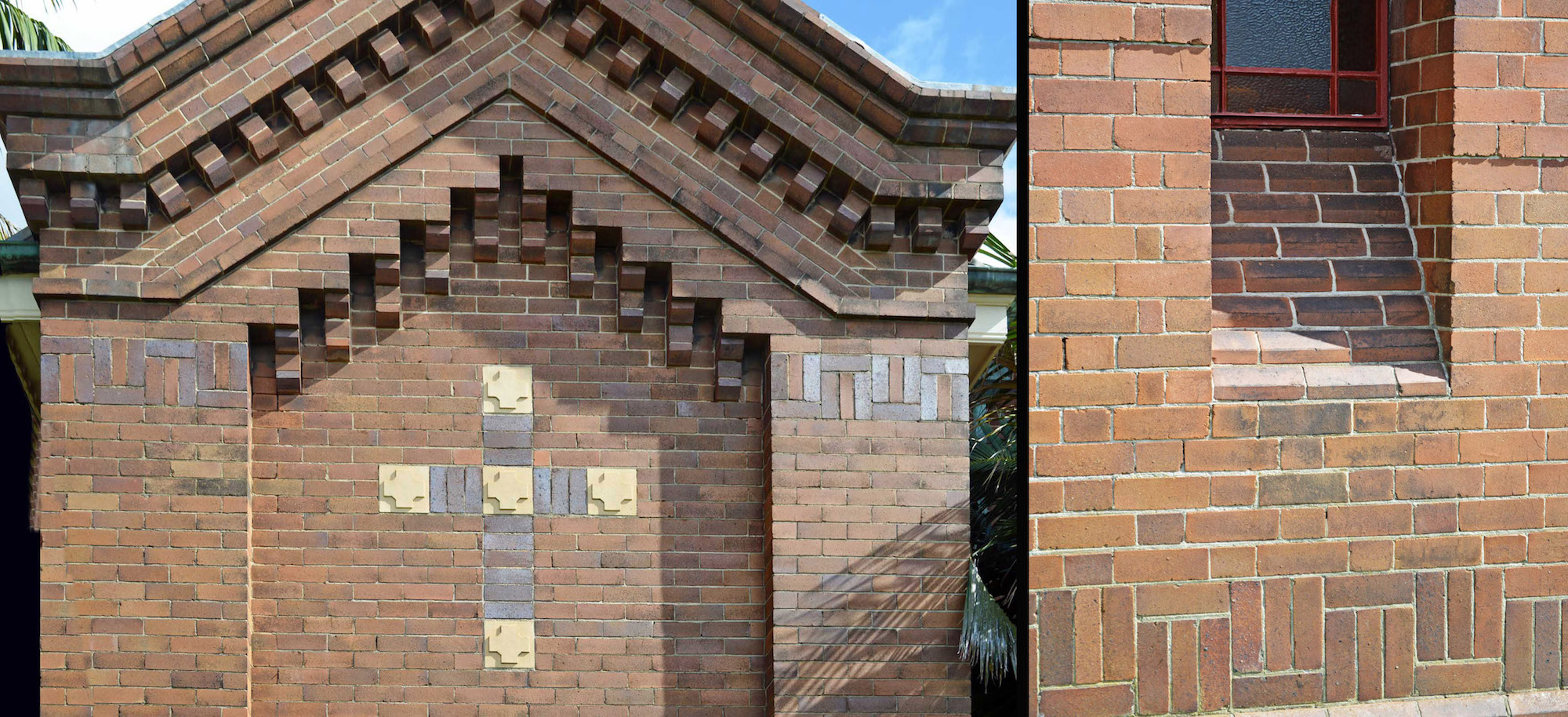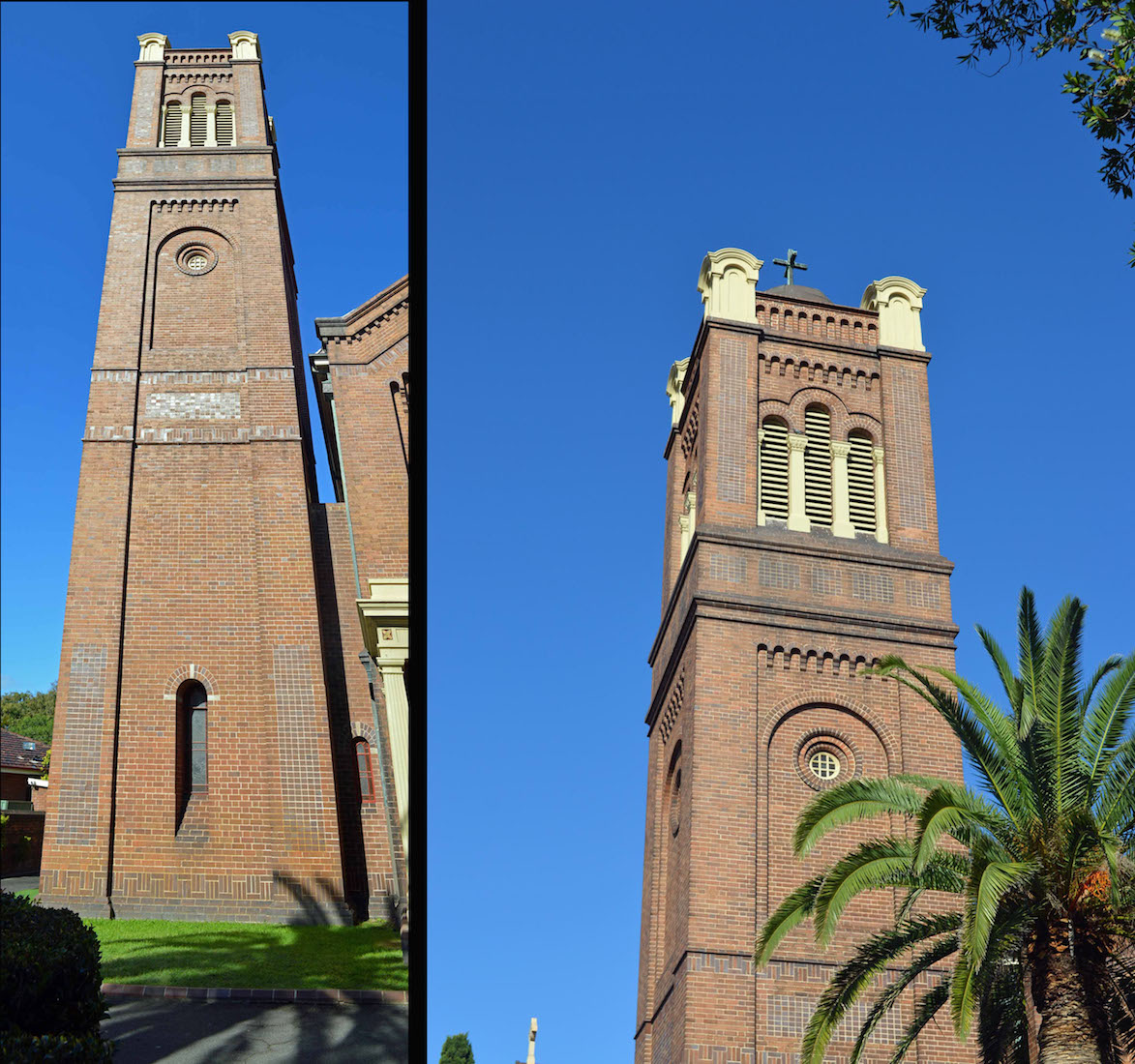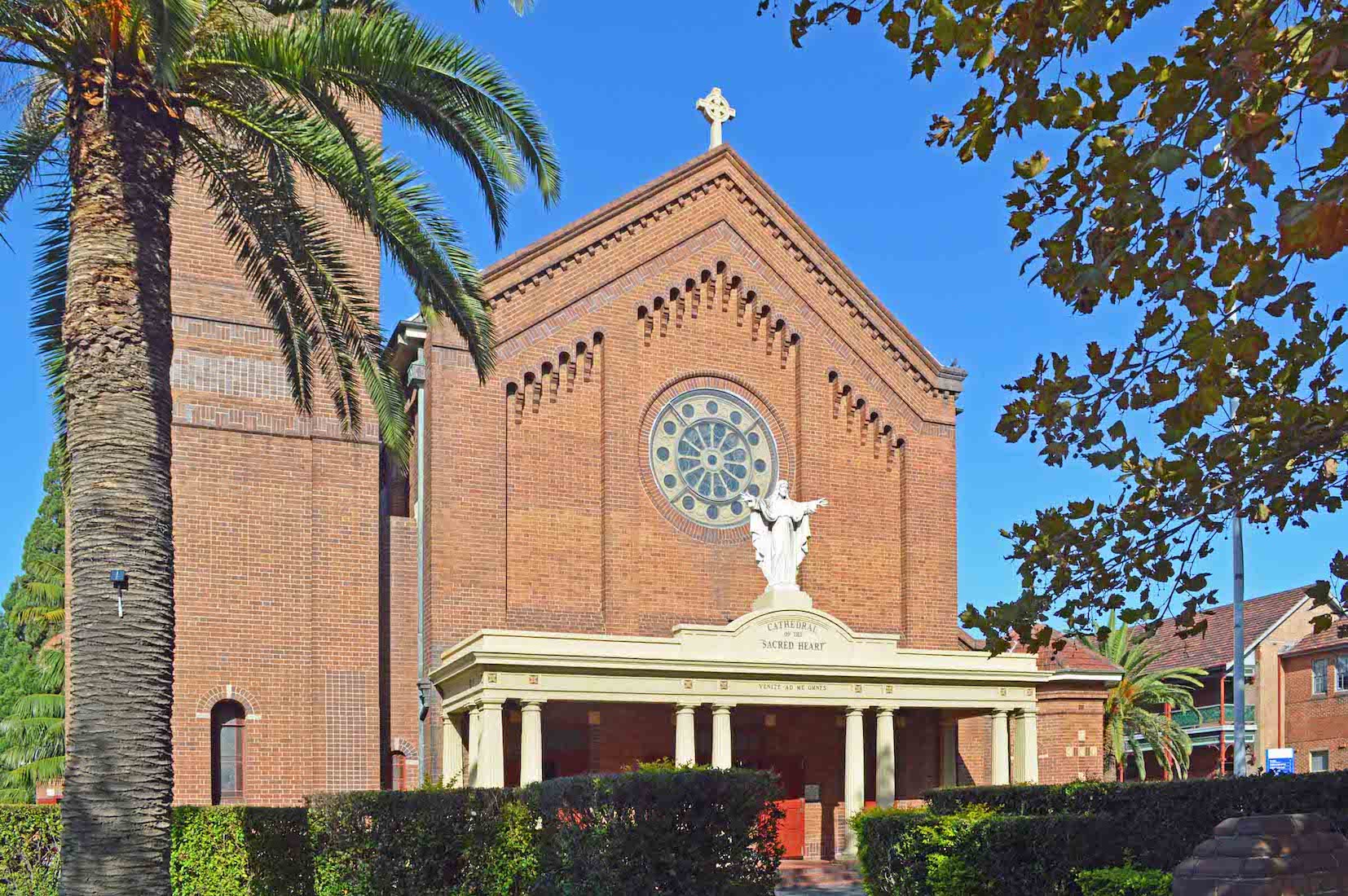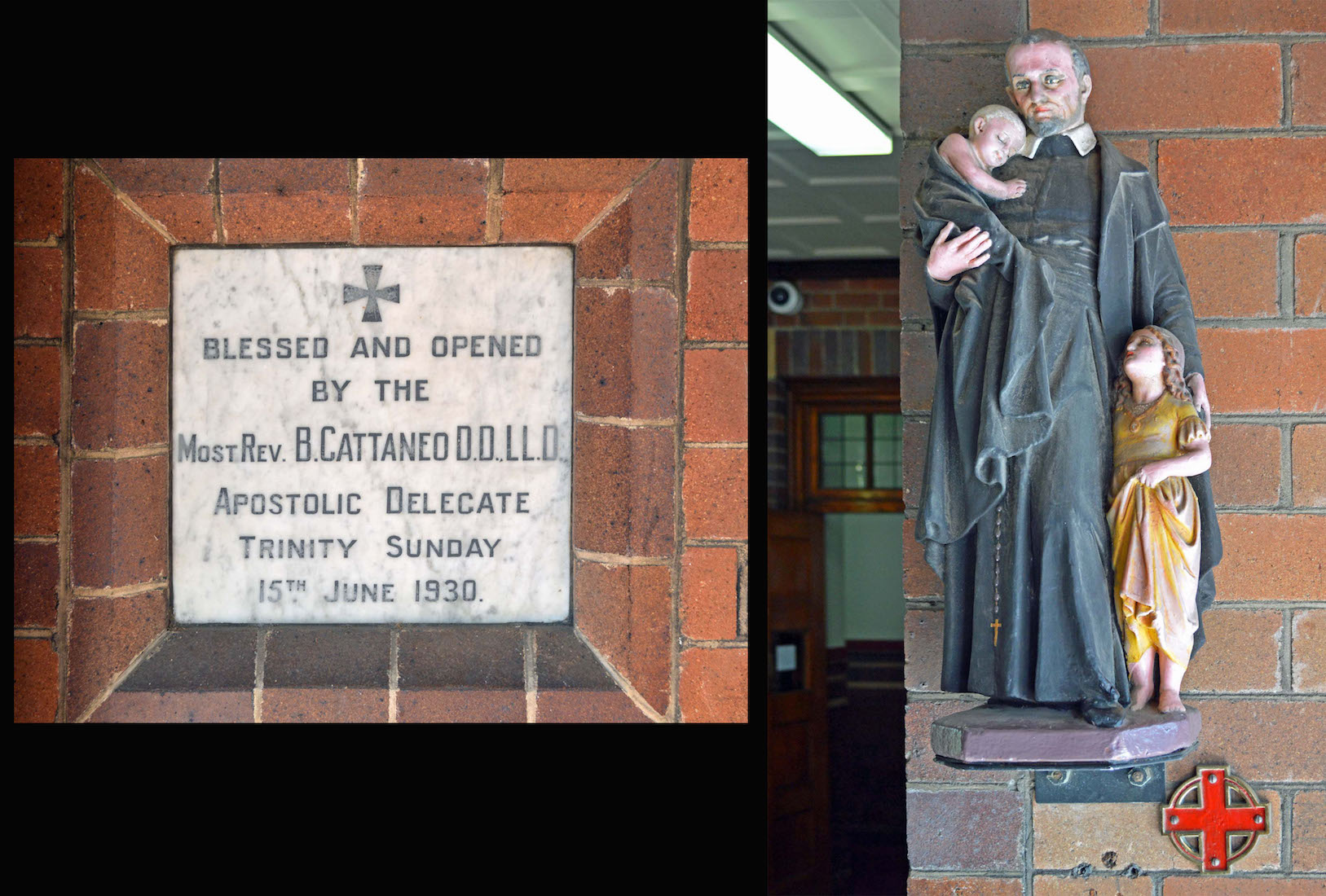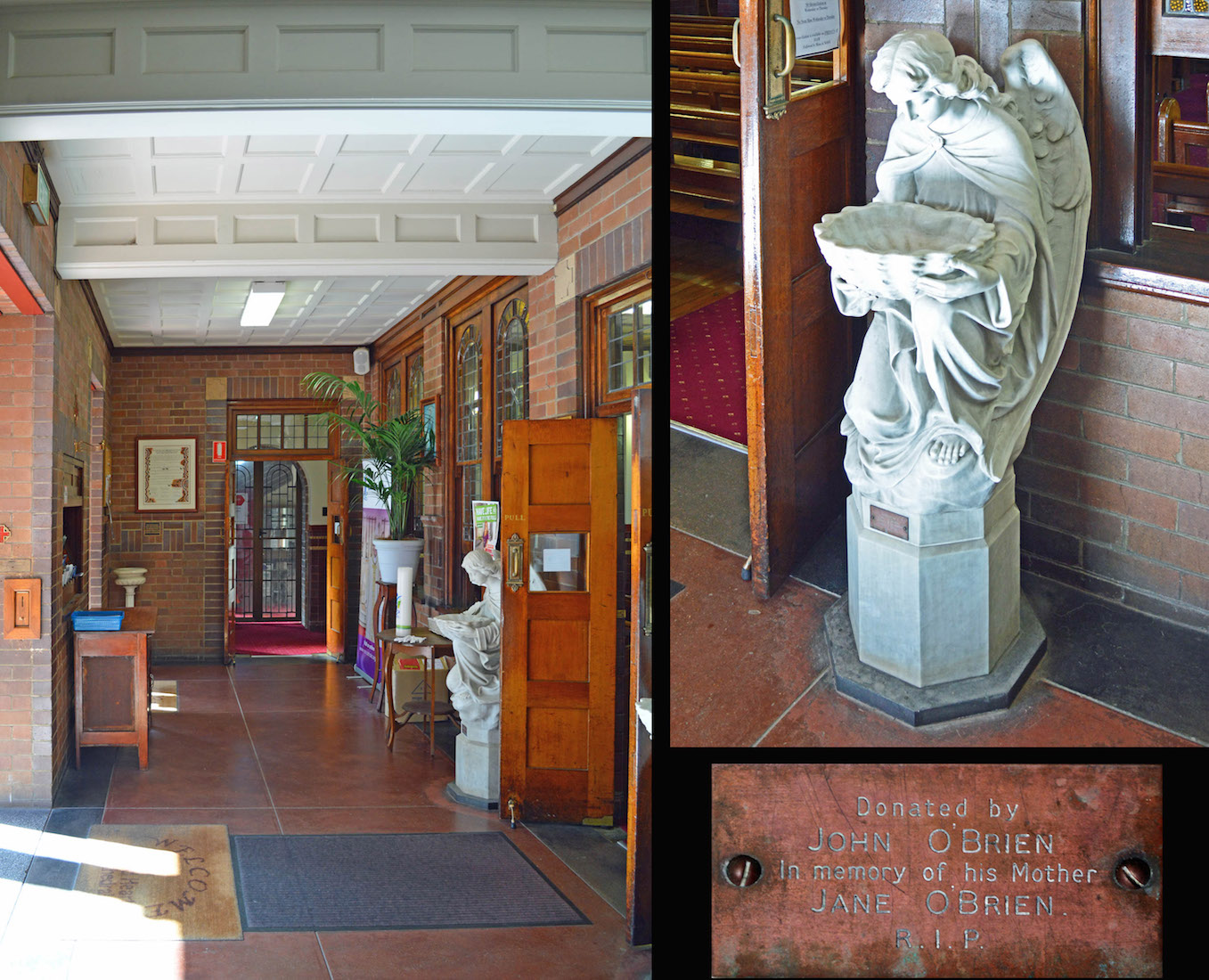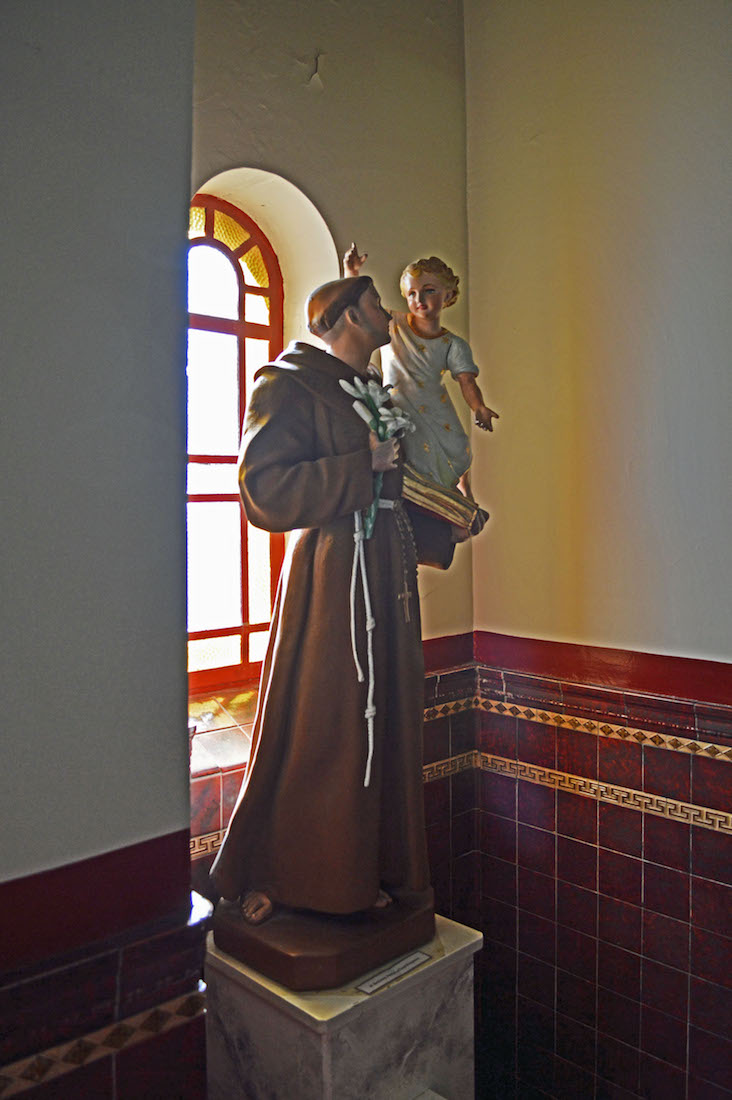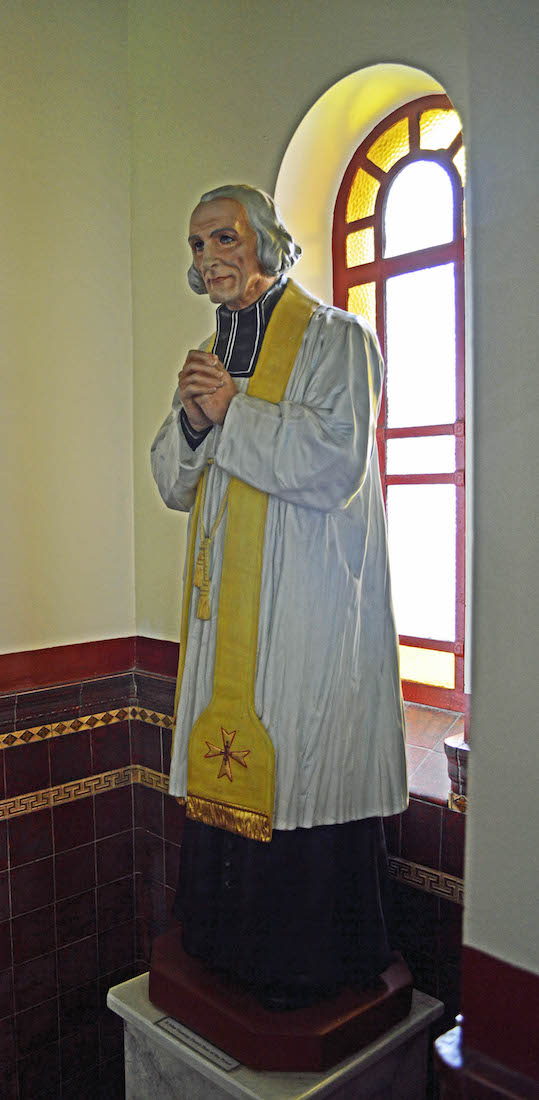
The satellite view of Sacred Heart Cathedral on the Pacific Highway through Hamilton, shows the Cathedral to be very neat and well defined. We see that the Cathedral is cruciform in shape with Liturgical East facing geographical south west. It is our custom to use Liturgical directions, as these enable viewers anywhere to navigate the Cathedral with ease. The satellite shows a tower in the North West corner, a baptistry (chapel) at the South West corner, a chapel off the North nave, and a semicircular apse for the sanctuary. A mysterious cream circular object sits off the South wall! PLAN
2A. WEST WALL
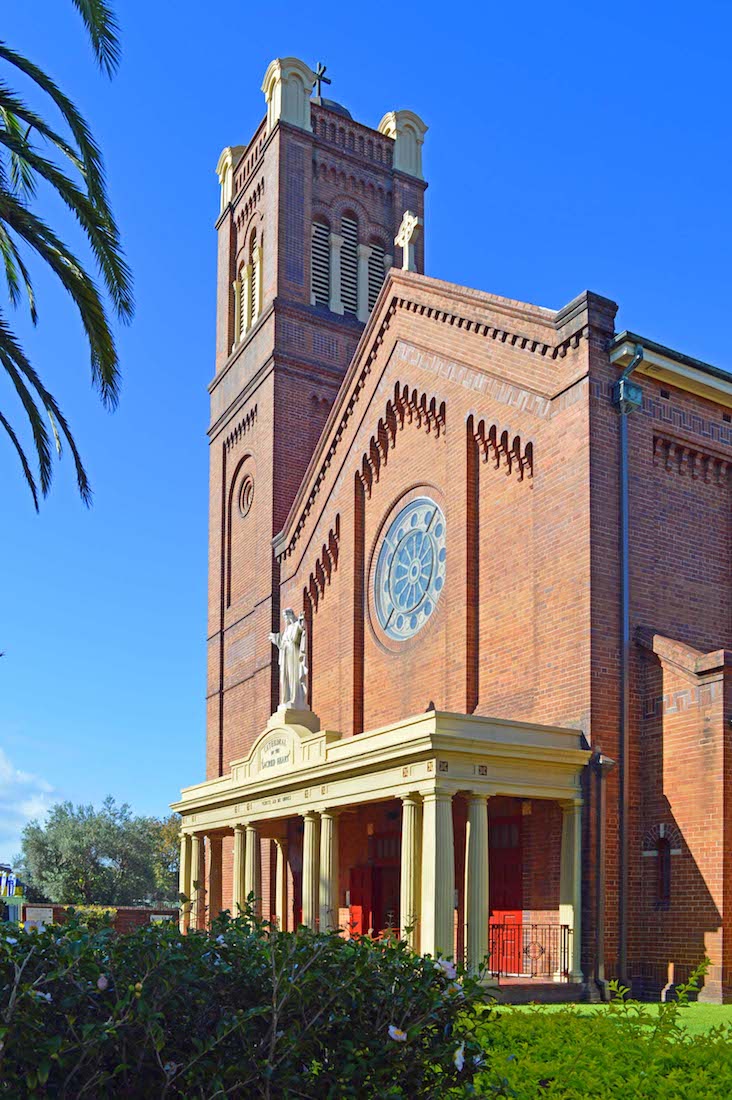
We begin our tour of this Cathedral at the South West corner. We can look back here across the West wall to the tower.
2B. SOUTH WEST CHAPEL
We also have a view of the South walls and the large South transept. In the foreground is a small octagonal chapel – originally a baptistry. Just beyond this chapel is a pair of confessionals, placed against the South nave wall.
2C. CHAPEL CROSS
The ornate cross surmounting the baptistry has an interesting story to be revealed later. The Sacred Heart Cathedral building was opened in 1930 as the parish church of Hamilton and was consecrated by Bishop Edmund Gleeson in 1941, before becoming Sacred Heart Cathedral on July 16, 1995.
3. OLD DOME
This mysterious object lying near the South wall of the Cathedral was originally the concrete dome of the bell tower. An earthquake of considerable magnitude struck Newcastle in 1989, and caused extensive damage, particularly to the bell tower. The original concrete dome was replaced by one of copper and the old dome now stands as a memorial to those who lost their lives in the earthquake. An engraved piece of marble gives details of the event and the names of those who died.
4A. SOUTH TRANSEPT
We move around to the end of the South transept. The Cathedral has an attractive ‘stalactite’ decoration around the top of the walls. The West wall and the end walls of the transepts are unusually divided into three vertical sections. This is an attractive feature but has the consequence that the round windows in these walls are necessarily small.
4B. SOUTH EAST CORNER
We see that a lower rectangular addition has been made in the South East corner of the Cathedral to house the sacristies. The Cathedral is built in Romanesque style, as suggested by the circular arches above the windows. From here we can view the round wall of the apse.
5A. COLUMBARIUM
In the grounds to the East of the Cathedral is a garden containing a columbarium, and an interesting statue of Christ. The left hand of the figure holds a white flower, acknowledging the memory of those who have died, and the accompanying grief. The right hand is raised in salute, and gives direction to the way ahead. As One who has died and is now risen, Christ brings comfort and reassurance to those at the end of their worldly life.
5B. GROTTO
Nearby is a grotto in honour of ‘Our Lady of Lourdes’. A stone tells us that the grotto was erected in remembrance of various members of the Murphy family.
6A. NORTH EAST CORNER
We now move to the North East of the Cathedral with a view of the apse and the North transept. Notice the decorative line of darker bricks near the roof line, and at centre, two of the sanctuary stained glass windows.
6B. NORTH TRANSEPT
Very much a church of the people, the Sacred Heart Church’s foundations were largely dug by the parishioners. The church was built virtually, brick by brick, on the dream of Monsignor Victor Francis Peters and through the generosity of parishioners who, in the midst of the Great Depression, bought bricks for an average of twopence each. A donation of ten pounds was the norm and in total, 700,000 bricks were used.
7A. NORTH WALL
The North wall of the Cathedral is a delight with this tropical garden placed between the North transept and the side chapel. The foundation stone was laid on September 23, 1928. The first brick was laid on February 1, 1929 and the last brick just ten months later on December 1, 1929.
7B. WALL DECORATION
The Cathedral does not have a lot of exterior ornamentation, but the grey and cream brick crosses are a feature, and the brick ‘waterfall’ sills are unusual. Monsignor Peters was influenced by the architecture of the Cathedral in Thurles in Ireland, the Cathedral Church of Philadelphia in USA and the brick work in front of the Pisa church in Italy.
8. TOWER
The solid bell tower stands at the Northwest corner of the Cathedral. I can find no record of any peal of bells being housed here. The bronze cross was made by a prominent Newcastle Communist known as ‘Red Arthur’, a renowned coppersmith by trade. Arthur offered to construct the cross on the bell tower for a fee, but would donate the baptistry cross which would stand as a remembrance of his Catholic mother. However, the coppersmith was to have a free hand in the design. This was agreed. We can see that the baptistry is now crowned by an ornate cross which stands as a tribute to a son's love for his mother, and a priest's compassion.
9A. WEST WALL
Having walked right around the Cathedral, we now enjoy the attractive approach to the West doors.
9C. ST ANTHONY
As we pass through the doorway, we observe on our left a memorial stone, commemorating the blessing and opening of the Cathedral by the Most Reverend B. Cattaneo on the 15th June, 1930. To the right stands an elderly St Anthony accompanied by two small children. There is a legend that when St Anthony died, the children cried in the streets and all the bells of the churches rang of their own accord.
10A. NARTHEX
The Cathedral narthex is an attractive, light and open area. On either side of the Cathedral entrance stands a marble angel carrying a bowl of holy water. These were donated by John O’Brien in memory of his mother Jane O’Brien.
10B. ST JOSEPH
At the North end of the narthex stands a statue of Joseph with the child Jesus. Joseph is easily recognized because of the lilies he holds – a reference to an old legend.
10C. ST JOHN VIANNEY
At the South end of the narthex stands the statue of St John Vianney. Vianney became internationally known for his priestly and pastoral work in his parish because of the radical spiritual transformation of the community and its surroundings.


